Born on 14 March 1900 at Grange Park, Carriden, Bo’ness, Linlithgowshire, Margaret Henderson Kidd was the eldest daughter of Janet Gardner Turnbull (1872-1930), a teacher, and James Kidd (1872-1928), a solicitor and Unionist MP for Linlithgowshire.

Birth entry of Margaret Henderson Kidd
Crown copyright, National Records of Scotland, Statutory Register of Births, 1900, 663/2 32
In 1923 Margaret Kidd was the first woman called to the Scottish bar, in 1948 was Britain’s first female King’s Counsel (KC), and the first female Sheriff Principal in 1960.
From a large family, Margaret Kidd can be traced through the National Records of Scotland (NRS) via Scotlands' People. In the census records for 1911, the family are recorded as living at 49 Grangepark, Carriden. Margaret is the eldest, at 11 years old, with three brothers and two sisters, aged between one and nine.

1911 Census recording the Kidd household
Crown copyright, NRS, Census of 1911, 663/2 2/8
In the recently released 1921 census records we can see that the family had moved to 16 Muiredge, still in Carriden, and that over the decade the Kidd family grew.; Margaret lived with her parents and now had five brothers and three sisters. In this census we can see the beginning of Margaret’s chosen career, with her ‘Personal Occupation’ recorded as ‘law student’.

1921 Census recording the Kidd household
Crown copyright, NRS, 1921 census, 663/2 2/3
Educated at Linlithgow Academy, Kidd later studied law at the University of Edinburgh, graduating with an MA and LLB in 1922. Her early training was conducted with Mitchell and Baxter, writers to the signet, in Edinburgh. Although her first choice of career was the Foreign Office, the then Permanent Secretary, Mr Eyre Crowe, ‘was opposed to women’, so instead Kidd decided to follow her father and go into law.
University of Edinburgh, Graduates in Law 1922, EUA IN1/ADS/STA/7
In 1923, Kidd was called to the Faculty of Advocates and became the first female with the right to plead in the Court of Session, the highest civil court in Scotland. The event attracted great interest from members of the faculty and the legal profession, as well as the media. The Scotsman newspaper, as was typical of press coverage of women in the news, took special interest in Margaret’s outfit, reporting that she wore a ‘coat frock of black crepe morocain, a soft white collar with a narrow white bow tie, and a straw hat trimmed with velvet.’ Later in the day she donned the wig and gown as she formally entered her new role.
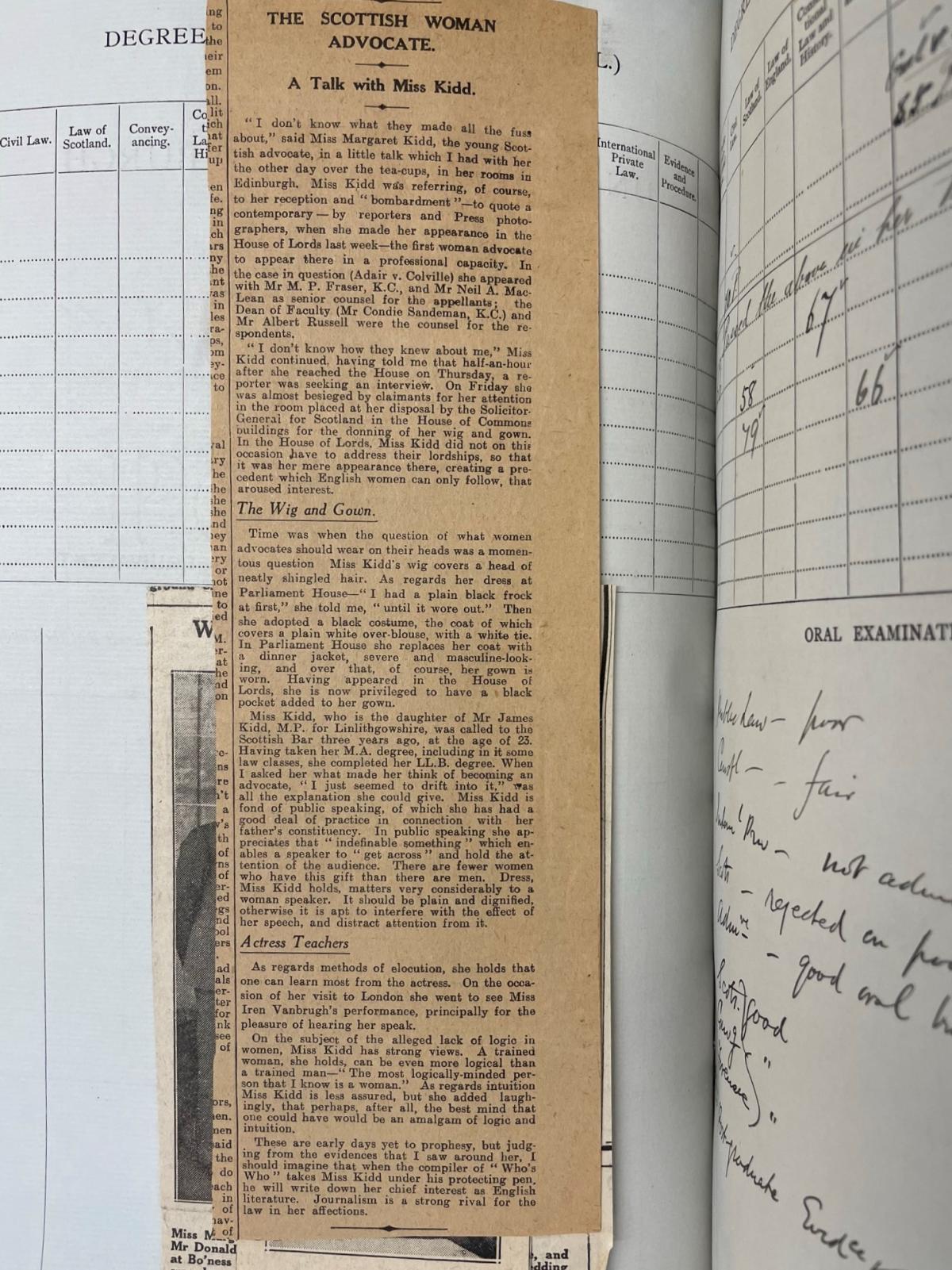
Newspaper clipping, unidentified.
University of Edinburgh, Graduates in Law 1922, EUA IN1/ADS/STA/7
Between 1923 and 1948 she remained the only lady advocate. Kidd was the first lady advocate to appear before the House of Lords and before a parliamentary select committee. Kidd also had the distinction of becoming the first woman KC in Britain, preceding Helena Normanton and Rose Helibron who were appointed KC in England and Wales in 1949.

Newspaper clipping, unidentified.
University of Edinburgh, Graduates in Law 1922, EUA IN1/ADS/STA/7
While Kidd appears to have downplayed the significance of her role and career in interviews – “I don’t know what they made all the fuss about” - it is clear that others, including her alma mater, were aware of and followed her progress. In the University of Edinburgh’s records of graduations, Kidd’s entry includes several newspaper clippings tracking parts of her career and life.
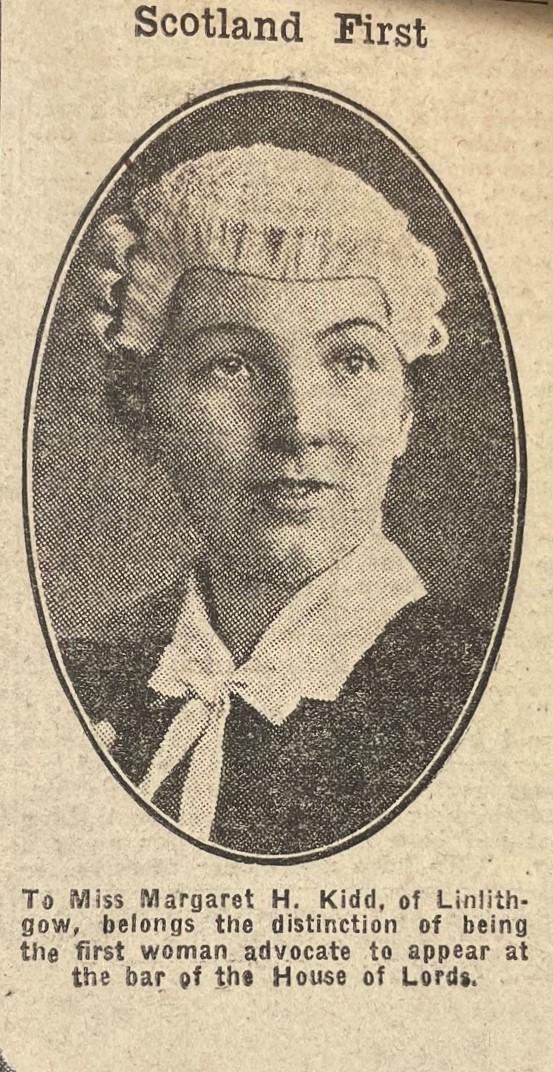
Newspaper clipping, unidentified.
University of Edinburgh, Graduates in Law 1922, EUA IN1/ADS/STA/7
In 1930 Margaret married Donald Somerled MacDonald in Carriden Parish Church. Donald was a Writer to the Signet and member of the firm Scott and Glover, Hill Street, Edinburgh.
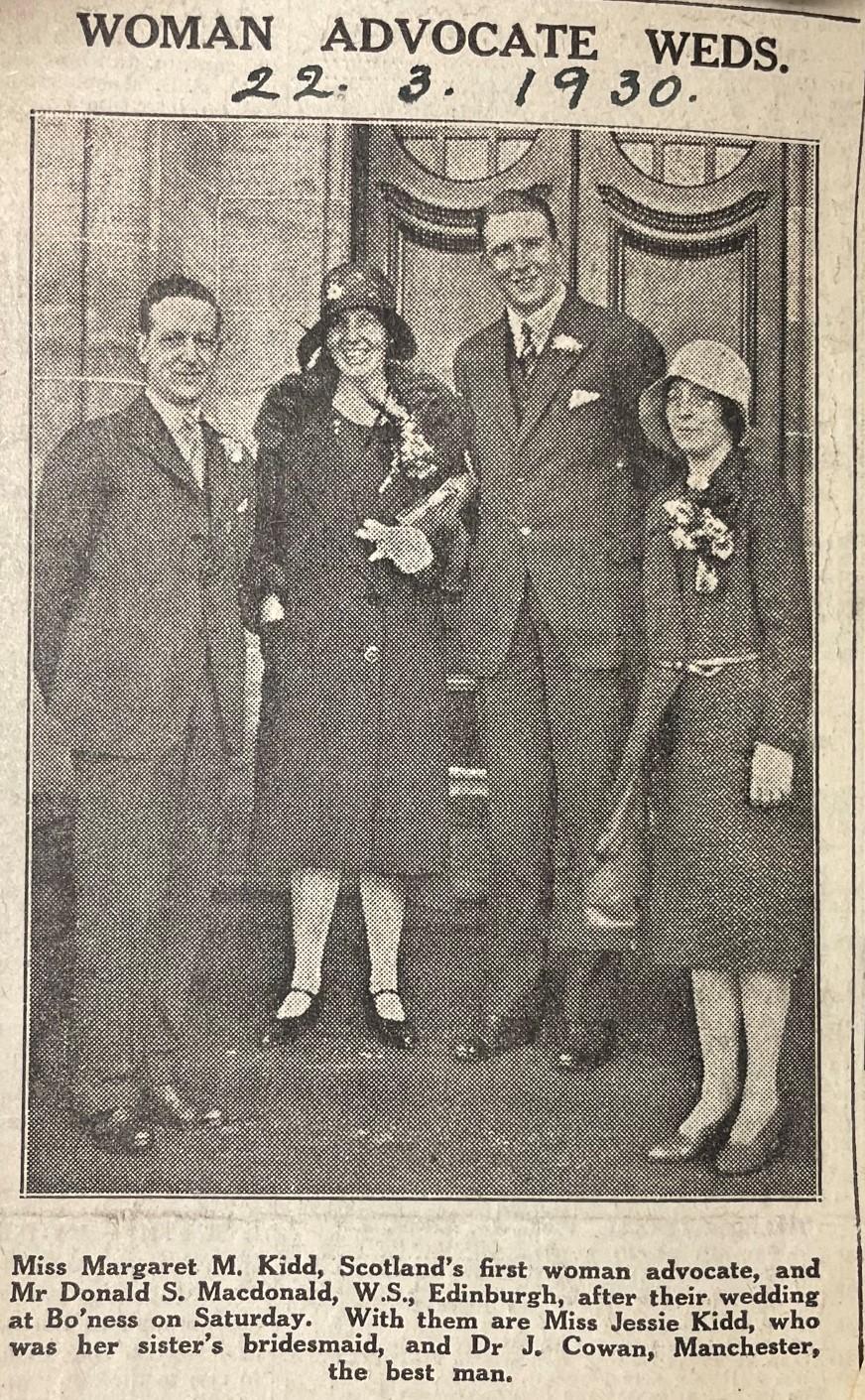
Newspaper clipping, unidentified, 22 March 1930.
University of Edinburgh, Graduates in Law 1922, EUA IN1/ADS/STA/7
Donald was the son of the barrister Mr Henry MacDonald. Interestingly, newspaper reports note that the ceremony was ‘kept secret’, but despite this, parishioners became aware and attended, numbering between two and three hundred . According to the Linlithgowshire Gazette (28/3/1930), ‘[a] long line of flags stretched from the church to a tall tree within the grounds, and at the gate of Muiredge, the bride’s home, which adjoins the church…’.
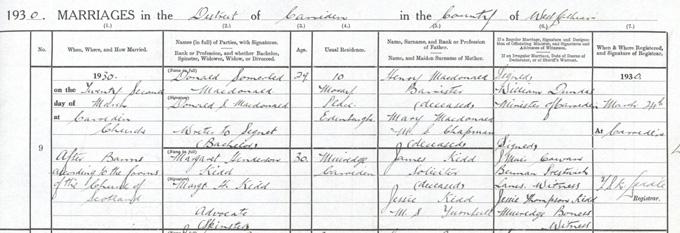
Marriage entry of Margaret Henderson Kidd and Donald Somerled MacDonald
Crown copyright, NRS, Statutory Register of Marriages, 1930, 663/29
It appears that in 1930 Kidd still lived in her family home. Kidd’s only attendant for the ceremony was her sister, Miss Jessie Kidd. The couple went on to have one daughter, Anne, who later married a Cambridge surgeon.
During the Second World War, Margaret played a prominent part in organising Christmas treats and functions for the wives and dependants of men serving with the 14th Light Anti-Aircraft Regiment, and particularly the 39th Battery, of which her brother Col. J. T. Kidd was then in command.
Margaret’s professional life also led her to sit on the committee of Representatives of Poor Persons in Scotland as a referee under the Widows and Orphans and Old Age Contributions Pensions Act, and to undertake the Assistantship in the class of Public Law at Edinburgh University.
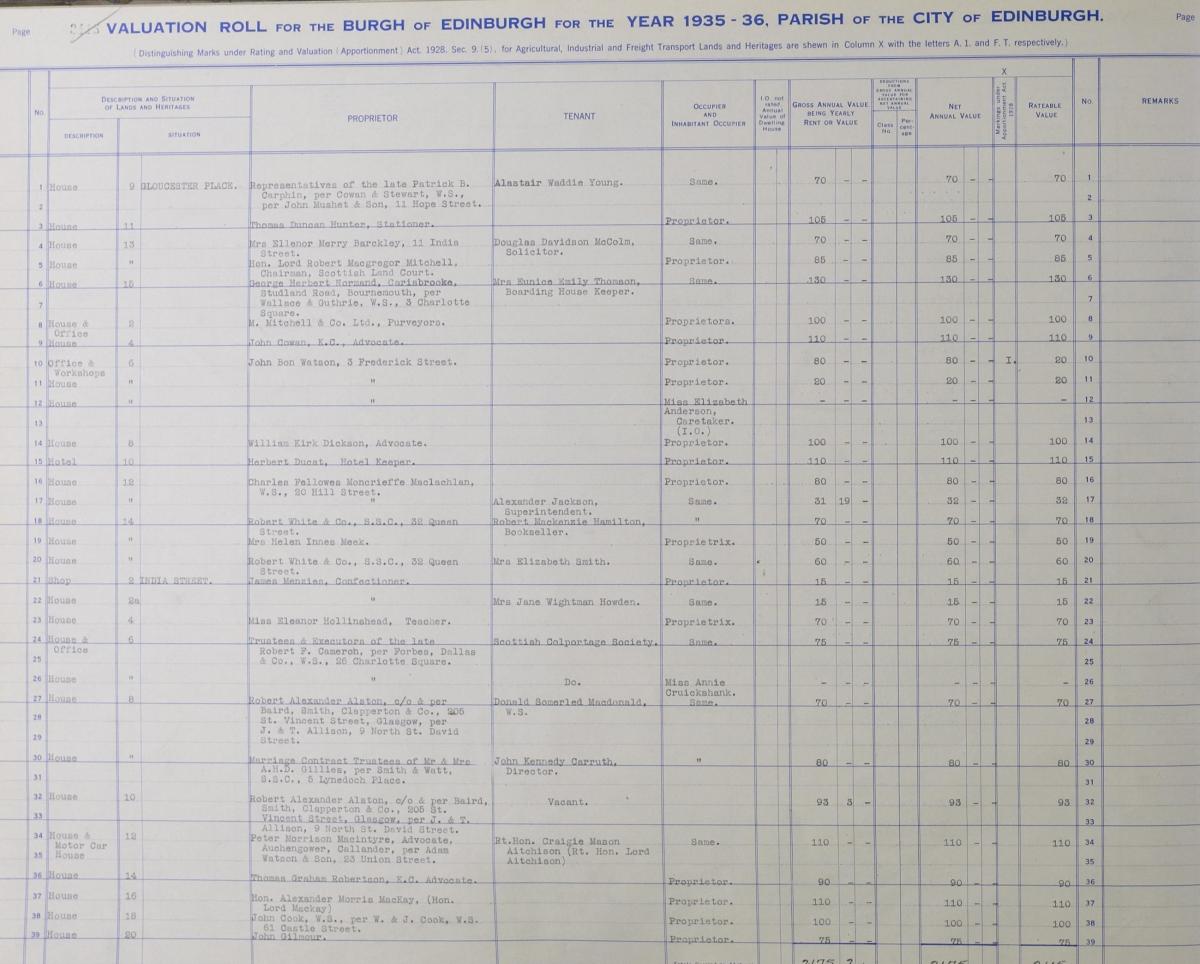

Detail of Donald Somerled MacDonald at 8 India Street. He is recorded as a tenant, and ‘W.S’ for ‘Writer to the Signet’.
Crown copyright, NRS, VR739/200, page 200
Margaret Kidd spent much of her life in India Street, Edinburgh. Donald had died in 1957, leaving Margaret a widow for over 30 years until her death on 22 March 1989 in Cambridge. A funeral service was held at the Canongate Kirk, Edinburgh. A eulogy by Lord Hope of Craighead echoed what had been printed about her 41 years earlier by the Scotsman:
‘Her success was won by strength of character, courage and integrity and is a mark of her true qualities that, despite what might seem to be the revolutionary nature of her achievements, she always held the affection and respect of others.’
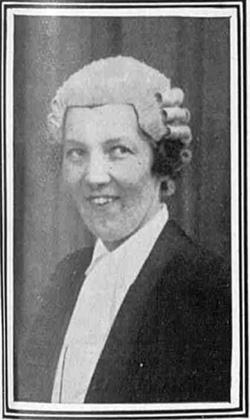
A photograph of Margaret in her wig and gown as printed in 'The Sphere' 13 March 1926.
© Illustrated London News Ltd/Mary Evans